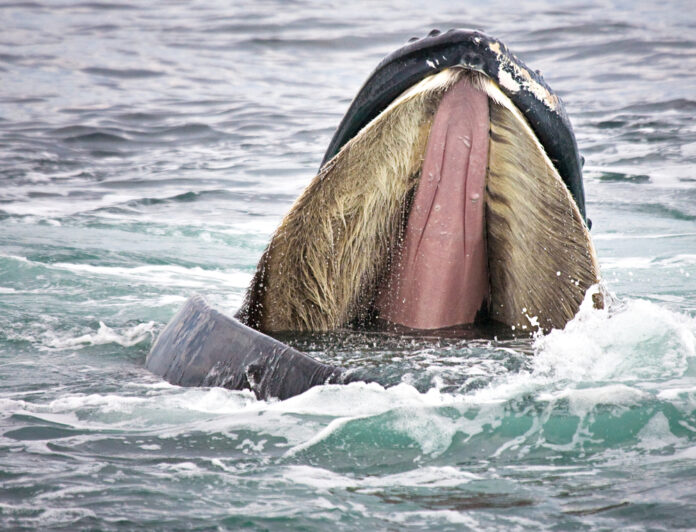Humans derive their sense of taste from tastebuds, which allow us to identify bitter, salty, sour, and sweet. In 1990, umami was identified as the fifth taste. Many animals also get their sense of taste through tastebuds, although there are other methods in the animal kingdom for identifying taste. Let’s take a look.
What Animals Have the Best and Worst Sense of Taste?
(Credit: MEDIAIMAG/Shutterstock)
The animal with the best sense of taste is the catfish. Possessing over 100,000 (and in some cases up to 175,000) taste buds, also called receptors, catfish are sometimes referred to as swimming tongues. They have a widespread distribution of taste receptors, including receptors in their mouths, on their skin, fins, and whiskers.
On the other hand, birds have a poor sense of taste. Although they don’t have many tastebuds, they use their bills and tongues to determine a particular food’s texture and potential safety. Birds are immune to the damaging effects of capsaicin, found in hot peppers. This is because they lack the receptor that binds to the capsaicin. Since they don’t have any ill effects and don’t digest the seeds, they wind up dispersing them — allowing for new pepper growth in other locations.
Read More: The 5 Senses Animals Have That Humans Don’t
Animals With Unique Taste Buds
(Credit: Nicole Scott Photo/Shuttrstock)
Some animals have developed highly specialized taste receptors that align with their unique diets and environments. These adaptations help them detect food that is safe and nutritious, reflecting the diverse ways animals use taste to survive in the wild.
Hummingbirds
Hummingbirds are unique in that their savory taste receptors evolved to identify and prefer sweet flavors. They seek out sweet floral nectar, as well as manmade hummingbird nectar (water and sugar) that people provide to attract hummingbirds.
Insects
Insects don’t have taste buds, but they have a highly developed sense of taste. They can identify bitter, acidic, salty, and sugary tastes — along with carbonation, fatty acids, and water. They derive their sense of taste through the use of gustatory sensilla, which is a type of chemoreceptor. Insects have taste receptors in their mouthparts, legs, wings, and antennae.
Cows
Cows have a well-developed sense of taste, with 25,000 taste buds — 2.5 times more than humans. The taste sensor on their tongues can distinguish sour, bitter, salty, and sweet tastes. As herbivores, they need to avoid toxic plants, which might be why cows have an aversion to bitter-tasting food. They prefer sweet or salty flavors.
Whales
Whales are interesting in that they don’t seem to have the ability to taste anything but salt. The taste buds for sweet, bitter, sour, and umami have become nonfunctional, leaving only the receptors to identify the taste of salt. The fact that whales swallow their food whole may be a contributing factor to their limited scope of taste.
Cats and Dogs
While both cats and dogs can detect water, the similarities end there. Cats are obligate carnivores, meaning they can’t digest plants and must eat meat to survive. Because their survival is dependent on meat, they can only taste flavors related to meat — including sour and bitter. This helps them assess the quality of meat. Cats can’t taste sweetness because they are carnivores. It’s not necessary for their survival.
Dogs have receptors for sweet, sour, spicy, and bitter tastes. They also have receptors for the taste of salt, but it’s diminished. This is due to their ancestors having a meat-based diet. Because meat contains sufficient salt, there was no need for this sense to evolve further.
Carnivores
Carnivorous animals eat a diet comprised only of meat. They aren’t driven by the flavor of their food, but are seeking adequate calories needed for survival. They mostly rely on their sense of bitterness in order to avoid eating dangerous or rancid meat.
Bears are often classified as carnivores, although black and brown bears are actually omnivores. They have almost 2,000 tastebuds, which they rely on. Along the way, they’ve retained the ability to identify sweetness — and enjoy consuming fruit and honey.
Read More: What Animals Can Sense That Humans Can’t
Article Sources
Our writers at Discovermagazine.com use peer-reviewed studies and high-quality sources for our articles, and our editors review for scientific accuracy and editorial standards. Review the sources used below for this article:
Allison Futterman is a Charlotte, N.C.-based writer whose science, history, and medical/health writing has appeared on a variety of platforms and in regional and national publications. These include Charlotte, People, Our State, and Philanthropy magazines, among others. She has a BA in communications and an MS in criminal justice.
Source : Discovermagazine











